New York City | Schleppin’ in the City
BY LAUREN WALSON
Travel around New York City with Lauren Walson on the 2014 Global Governance and the United Nations System Travel Study program.
BY LAUREN WALSON
Travel around New York City with Lauren Walson on the 2014 Global Governance and the United Nations System Travel Study program.
BY CHRISTINE TRAN
Christine Tran’s photo blog shares scenes from UCLA Travel Study’s 2014 English Shakespeare program in London and Stratford-upon-Avon, England.
By SAVANNAH SHAPIRO
Studying Abroad is an experience of a lifetime. Traveling across the country with students from UCLA and learning the ins-and-outs of London is something that very few people can say they have ever done. During my freshmen year at UCLA, I knew that I wanted to study abroad. I remember specifically walking through the multiple rows of Ackerman Grand Ballroom where The International Education Office had lines of tables showing all the various trips they offered throughout the summer. The tables had over 20 countries that students were visiting. I remember how excited I felt at the idea of going abroad and studying in a new location. All my life, my mom has always told me to be a sponge and soak up everything I possible could. Studying abroad in Europe seemed like an opportunity that I wanted to soak in. The opportunity felt even more special because I thought it would be my only chance to be able to experience a country as an undergraduate student at UCLA. After talking to previous students who went on study abroad trips and seeing the enthusiasm and excitement that they all shared from their own experiences, it gave me the encouragement and excitement to pursue a study abroad program with UCLA.
After I decided that I was going to travel abroad my freshmen year, it was just a matter of deciding what program I wanted to go on and where I specifically wanted to go. It was a dream of mine to go to London. My sister and I always used to talk about traveling to the United Kingdom and was at the top of our list. It wasn’t until my sophomore year when I decided to study specifically in London in the Romanticism Program with Professor Makdisi. Ever since I took English 119 in Winter Quarter at UCLA with Professor Makdisi, I knew that I wanted to explore and build upon what I learned about the city of London in his class. As my sophomore London class sat in Haines and learned about the city of London, I remember something that Professor Makdisi said as he was showing us a first person perspective as if you were on an Omnibus. He explained that although he could show us what London looked like on screen, it is a completely different experience in person. The streets, the city, the nightlife were all things about London that were indescribable and needed to be experienced. And he was right. Everything was different. From the streets, the cars, the city life, and atmosphere, it was completely different than the United States. Something that you couldn’t teach out of a textbook, but rather something that you had to explore in person. I thought what better way to explore an unknown city with people from UCLA. An experience like this is indescribable and is something that I encourage anyone to take advantage of!
Savannah Shapiro studied abroad in London, England in Summer 2017: https://ieo.ucla.edu/travelstudy/English-London/
By SAVANNAH SHAPIRO
On my first day in London, my friend Morgan took me to visit Hyde Park. It was the day before my first class started and a good way to familiarize myself with the congested streets of the city. After walking to Buckingham Palace, we crossed the street and stopped by a local grocery store called Marks & Spencer to pick up our mild and creamy Camebert cheese, a block of mature cheddar and a box of crackers. We took our cheese and crackers to Hyde Park and sat right in front of the pond watching the ducks swim in the lake. Although Hyde Park was busy because of the ongoing summer festivals and concerts, it was still enjoyable and relaxing. We could hear Green Day playing in the background as we ate our cheese and crackers and tiny row boats crowded the surface of the lake that sits in the center of the park. Spread throughout and across the lawn of the park, there are green and white stripped chairs littering the lawn. The chairs are called Park Deck Chairs and as comfy as they may look, they come at a price. To sit in one of the chairs on the lawn, the price varies from £1.60 for one hour and £4.60 for up to four hours. For us, the nice green grass worked just fine.
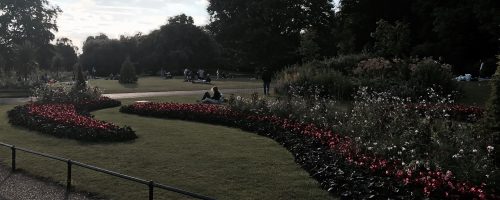
One of my favorite aspects of Hyde Park was the gardens. Surrounding the pathways of the pond were rows of different flowers and plants. There is the Rose garden that is located in the south east corner of Hyde Park, near Hyde Park Corner and just south of Serpentine Road. A walk through the gardens, which is free, was both relaxing and helped me adjust to the long day of traveling I did the previous day.



In addition to picnicking and walking through the Hyde Gardens, the Serpentine, which is the lake centered in the middle of Hyde Park, is a place where you can rent a boat for an hour and paddle across the lake. Boating opens up from the months of April to October and opens at 10:00AM. The boats do not close until the sun sets which during the summer time is anywhere around 8:00-9:00PM. The cost per person on the boats is £12 for one hour and £10 for 30 minutes. This is approximately $15.60 and $13 respectively in U.S. currency.
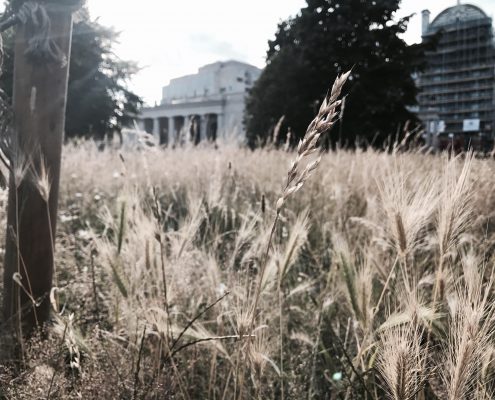
If you get a little hungry or thirsty while you are at Hyde Park, there is a tiny little restaurant that sits on the edge of the pond that offers sandwiches, salads and snacks. More importantly, there is a little ice cream station attached to the outside of the restaurant that scoops your favorite gelato flavors that goes perfectly with a nice walk in the garden!
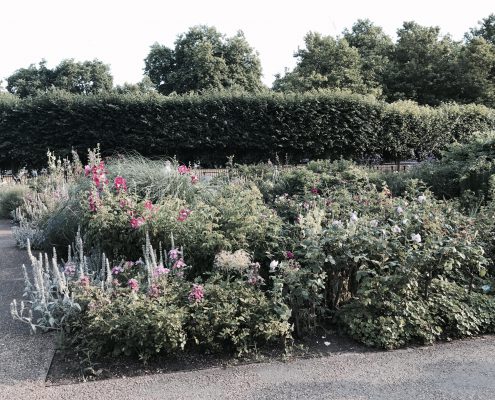
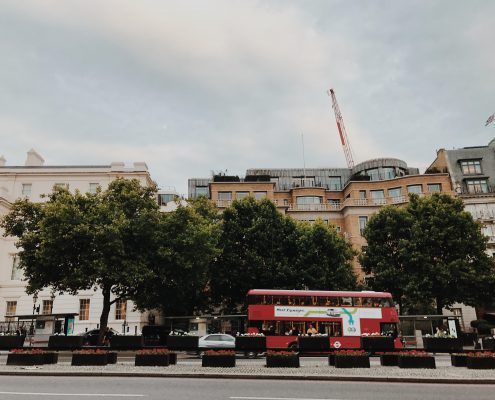
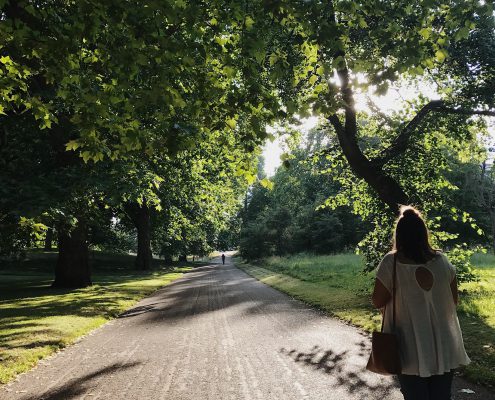
Hyde Park Quick Tips:

Savannah Shapiro studied abroad in London, England, in Summer 2017: https://ieo.ucla.edu/travelstudy/English-London/
By SAVANNAH SHAPIRO
If you’re planning to study abroad, you’ll be surprised how fast your trip sneaks up on you! Someone once told me to do as many things to prepare for your study abroad trip as soon as possible. Taking time before your trip to purchase luggage, your plane ticket and making room accommodations for any other travel plans you may have while on your trip are great ways to be prepared for your trip all the while lessening the stress load before you have to leave. This advice helped me tremendously before my trip to London. As you prepare to plan and prepare for your study abroad trip, one of the very first things you’ll want to do is make sure you have a passport.
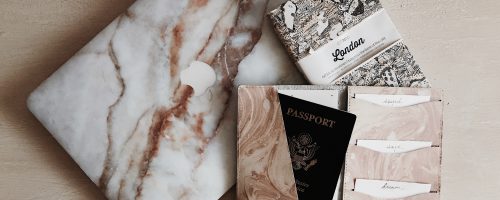
If you’re traveling for the first time out of the United States, like I was, or if you already have passport, the first thing you will want to do is make sure that your passport is valid or plan in advance to get a passport. If you do not already have a passport or you need to renew the passport that you already have, you are going to want to do this as soon as possible. For me, this was the first time I ever traveled outside the United States so I started from scratch. During Christmas Break, I thought it would be the perfect time purchase my passport so I had plenty of time for it to be sent to me before my trip. Every passport requires specific measurements for your photo and stores like CVS and RiteAid are great locations that will take your picture for your passport and print them out for a good price. Depending on certain locations, your post office may complete the passport transaction entirely, however some do not. If your local post office does not offer to expedite the passport, your local city hall will most likely offer this service. When you go to get your passport, you’ll need three things:
The cost for a passport is approximately $110, but prices may vary. Approximately two to three weeks after I went to the Redondo City Hall to get my passport, I received my passport in the mail and I was ready for London!
http://www.uspassporthelpguide.com/passport-fee/
Main Points / Tips
Savannah Shapiro studied abroad in London, England, in Summer 2017: https://ieo.ucla.edu/travelstudy/English-London/
BY SAVANNAH SHAPIRO
LONDON
It’s already week 2 for us here in London and we only have 11 more days left in England. On Monday, we had our first classroom session which was on the campus on the University of Westminster. It felt like a normal day of class at UCLA, but felt different as Professor Makdisi talked about the streets on London while in London. I started making the connections to our readings we did and the streets we already roamed in London.
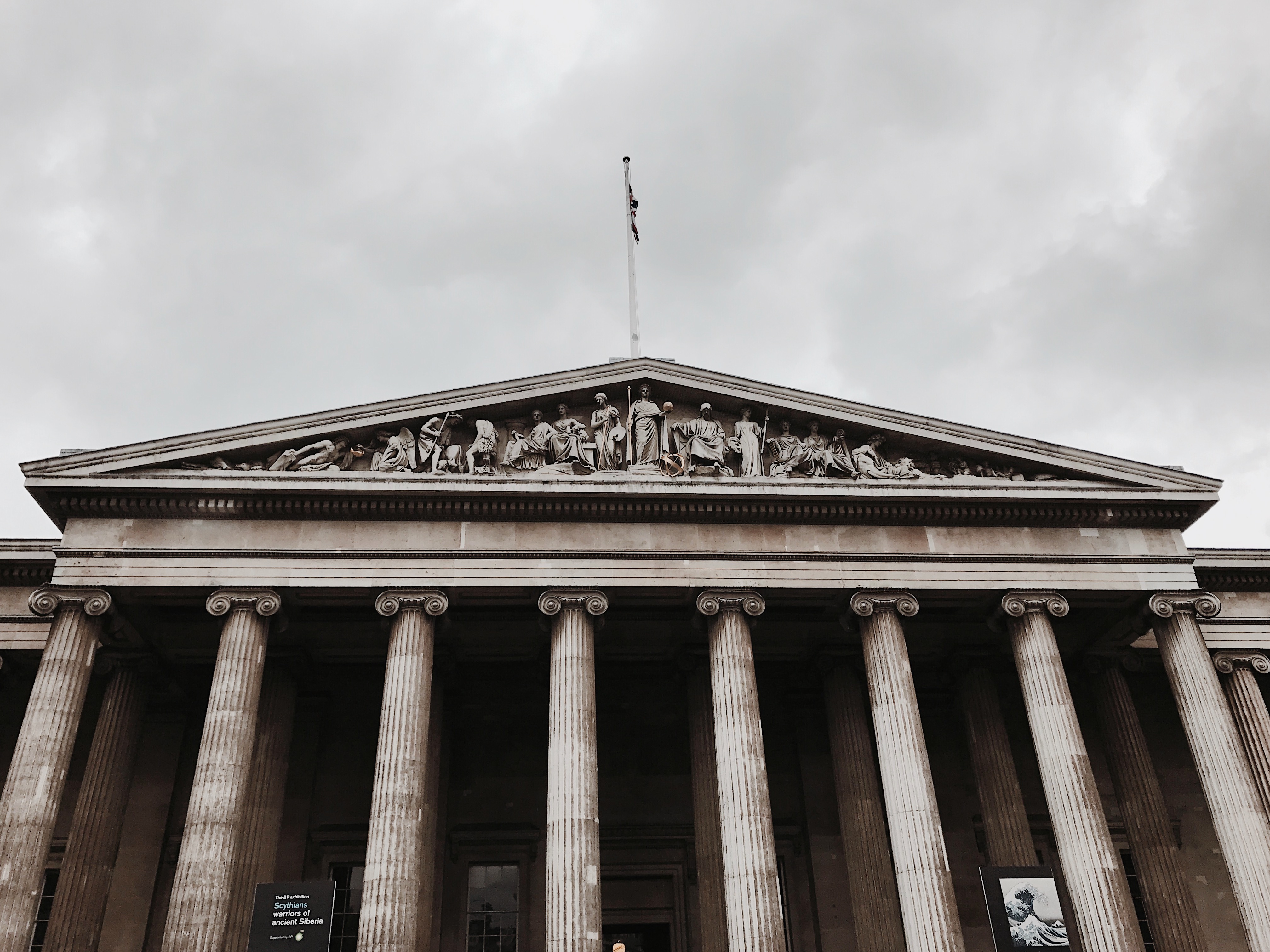
Tuesday was a day for museums. We started our morning off bright and early and took some time before class to visit The British Museum. It was also the first day where we encountered rain. We were lucky enough to have clear and sunny skies for our first week here, but the rain came at last. Luckily, we were indoors which made it the perfect day to tour some museums.
The British Museum is so large that you can spend hours and hours wandering through all the rooms in the building. There are over 90 rooms that are dedicated to Ancient Egypt, Ancient Rome and Greece, Asia, the Middle East, and Europe. Not to mention, the museum is free! We spent most of our time in the Ancient Greece and Rome rooms, as well as the Egyptian room. My favorite room was the gallery that contained the Elgin Marbles. The marbles that were from the Parthenon in Athens Greece seemed so remarkable that my mind couldn’t fully comprehend what I was seeing.
In addition to the Elgin Marbles, we saw the Rosetta Stone which was swarmed with hoards of people. The Rosetta Stone was the key for scholars to understand and decode the ancient Egyptian hieroglyphics. The cluster of ancient hieroglyphics clutter the surface of the stone from top to bottom. Although it was crowded around the Rosetta Stone, it was something definitely worth seeing.
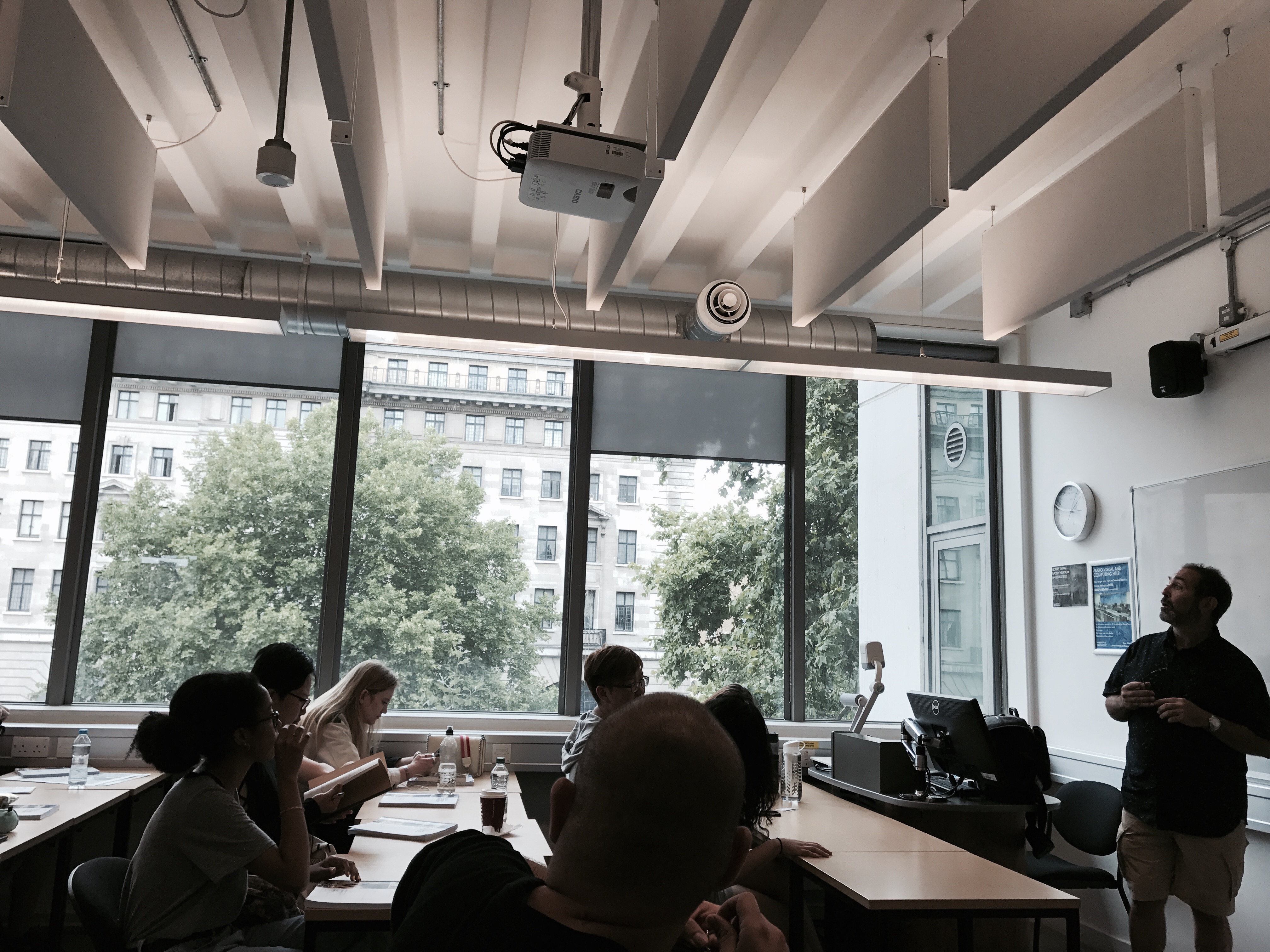
After The British Museum, it was time for class and we had to meet Professor Makdisi at the Tate Britain. The Tate Britain is the National Collection of British Art and is much less busy than The British Museum. At the Tate, we looked at artwork by Turner and Blake connecting the concepts of our walking tours to the pieces of artwork. We looked at how 18th century was captured both the good and the bad and compared this to the writing of Blake, Hannah Moore and Hazlitt.
After we finished walking the Tate and finished class for the day, we went back to the dorms and relaxed. We called it an early night and made plans for the next day in Hamstead Heath.
Savannah Shapiro studied abroad in England on the 2017 Summer Travel Study program “London and the Age of Revolution:” https://ieo.ucla.edu/travelstudy/English-London/
BY SAVANNAH SHAPIRO
LONDON
Before I came on this study abroad trip, I knew I wanted to do everything I could possibly do within the time I would be spending in London. Our class doesn’t start in the mid-afternoons and varies day-to-day so I try to do as much as I possibly can during the morning.
Our class didn’t start until 2:00PM on our third day in London so five of us, myself included, decided to explore London and go see the London Eye, Westminster Palace, Westminster Abbey and Big Ben. We started our morning at 9:00 and took the Underground straight to the London Eye. We purchased tickets which cost £25 to take the 30 minute loop on the ferris wheel. I am not the biggest fan of ferris wheels, but this was one ferris wheel that I did like. You could see the entire city of London and get an entire aerial and panoramic view of the city. Our pod was air-conditioned (which as you know, is something I really appreciate when it’s so rare to come by here) and it inches along so slowly that it gives you just enough time to see everything. I would highly recommend to leave early in the morning to go to the London Eye to avoid long lines and a congested area. Later in the evening the line grows longer and longer as opposed to the morinngs where the lines aren’t as bad.
After we got off the eye, we walked along Westminster Bridge looking up at Big Ben which was surreal. The area was busy, but because we went in the morning, it wasn’t as bad as it normally gets in the afternoon. We walked to Westminster Abbey and looked upon the intricate details of the front of the church.
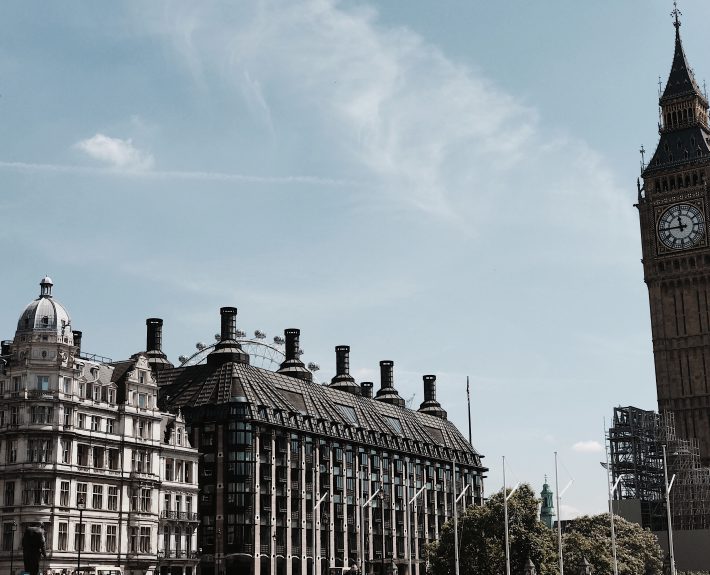
During our walking tour for class, we walked down Monmouth Street and to Seven Dials. We were able to see one of Nicholas Hawksmoor’s Churches which was featured in one of Hogarth’s print. I remember looking at the same print in class at UCLA and I was able to see the same church that was in the picture. We walked down further all the way down to Saffron Hill to conclude our day. There is a pub down the way called “The One Ton” which was mentioned in Charles Dickens’ Oliver Twist as “The Three Cripples.”
It was a long day in London for us, but one of the best days! We were very tired but excited for the next day of adventures.
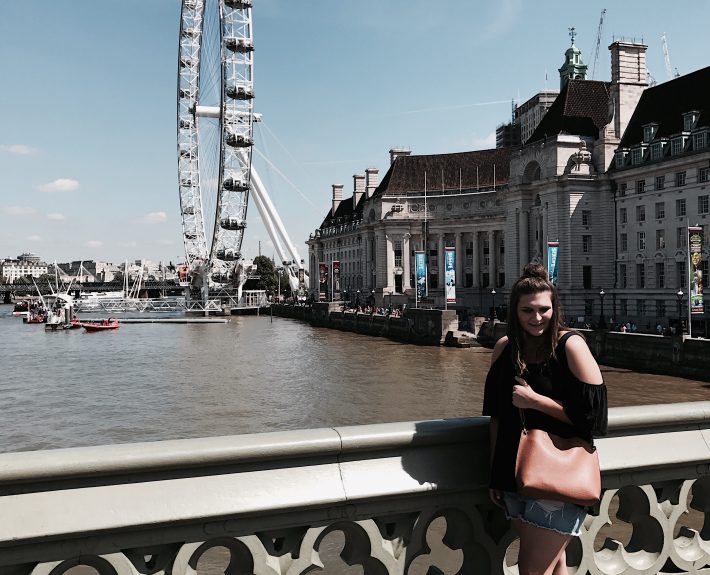
Savannah Shapiro studied abroad in England on the 2017 Summer Travel Study program “London and the Age of Revolution:” https://ieo.ucla.edu/travelstudy/English-London/
BY SAVANNAH SHAPIRO
The weekends are your free time. Professor Makdisi ends class early on Friday allowing you to fly out or take a train to another country which many students did their first weekend here. We decided to stay in England for our first weekend and travel outside the city into the countryside. We booked a tour where it took us to Windsor Castle, Lacock, Bath and Stonehenge. We had a long day and started the day off early meeting our bus at 7:45 in the morning at Victoria.

The bus was air conditioned (thank goodness) and the seats were nice and comfy making the trip on the road nice and comfortable. The whole week, we were always planning what to do and where to go, and this was the first time where someone was guiding us where tog o and when to come back which was something that I liked. It felt like a middle school field trip and it was nice for once to have some guidance on what to do and where to go. We didn’t have to worry about admission tickets inside the castle or Stonehenge, everything was already taken care of through the tours which made things that much more simple for us.
Windsor was so amazing that it is hard to even put into words. The castle was surreal and the rooms inside packed in centuries of history. The crown molding that ran across the circumference of the wall and crystal chandeliers that hung from the ceilings were restored by Queen Elizabeth and transported you into a different time. There were separate rooms dedicated the knight’s armory rooms and old weaponry. I highly recommend exploring The State Apartments at Windsor which include all the bedrooms, weapon rooms and dinning tables of the castle. Certain rooms are closed during specific seasons of the years, but nonetheless every part of the castle that was open was awe inspiring.
After our stop at Windsor, our tour guide Doug and driver Ricardo took us through the English countryside. We stopped in a tiny little village called Lacock where little houses sat on cobblestone streets. We were again transported in another time period. The cottages were cozy and tucked away on the long windy cobble stoned streets and we were able to wander up and down the pathways. It was like a fairytale.
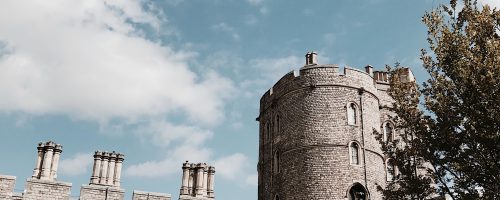
Our next stop took us to Bath. Bath felt like a little piece of Italy with its Yellowstone building and Roman architecture. We didn’t go into the Roman Baths although we could. The line was a little long and we decided that we just wanted to walk around the city and into the abbey that was rigt next to the baths. After going into the abbey, we walked down to a tiny little bakery down by the river and ate some pastries. The bakery was tucked away under a building where you had to crouch your head down low enough to get through the window that was the door. We passed a hand squeezed lemonade stand where you could smell the fresh scent of lemon peel. We stood on top of the walkaway and peered down at the gardens taking in all the sights around us.
We soon made our way back onto the bus and proceeded to travel to our final stop of the day: Stonehenge. We parked next to a field that was littered with red poppies. The poppy filed alone would be worth visiting. A small little bus took us down the 2 mile path that leads up to Stonehenge. We walked up to the stones and fell in awe. It is another monument that is so historic that you don’t realize you are seeing it until you are there.
I payed £74 for our trip to the countryside which included all of our entrance fees to the locations and a free lunch. Without a doubt, it was the best £74 I’ve spent so far.
BY SAVANNAH SHAPIRO
I have never been on a plane by myself. I have never left the country. And the furthest flight that I have ever been on was from California to Arizona. That flight lasted around 35 minutes… Needless to say, I was a little nervous to be flying by myself on a ten hour flight to another country. My flight left at 6:00PM a day before my English program started giving me one day to explore the city. When I arrived at LAX, I was feeling both nervous and excited. My cousin gave me some advice prior to leaving that was extremely helpful for me.

Quick Tips:
The app “Citymapper” is extremely helpful when trying to navigate the city. The app has bus routes, times and routes of the Underground as well as the fatest and cheapest options to wherever you are trying to go.
BY SAVANNAH SHAPIRO
London
Our second walking tour consisted of walking Trafalgar Square, which soon became one of my favorite hubs in London. Trafaglar square is busy and has been busy since the 1830s. Professor Makdisi explained during our walking tour that Trafaglar Square was a beacon for protests and riots during the 19th century. The statue that stands directly in the middle marks the middle of the congested area and became my personal indicator that I was in the right place and not lost. The area now known as Trafaglar Square was originally known to be Charing Cross, but was later changed to expand the space and create a new urban space. Trafaglar Square is home to The National Gallery, which Professor Makdisi took us to later in the week. Not only does The National Gallery have paintings by Monet, Van Gogh, and Hogarth, but the gallery is also free and air conditioned (something that is hard to find in London). In addition, the National Gallery holds many other pieces of artwork by other artists which collectively amount up to around 300 paintings within the gallery itself.
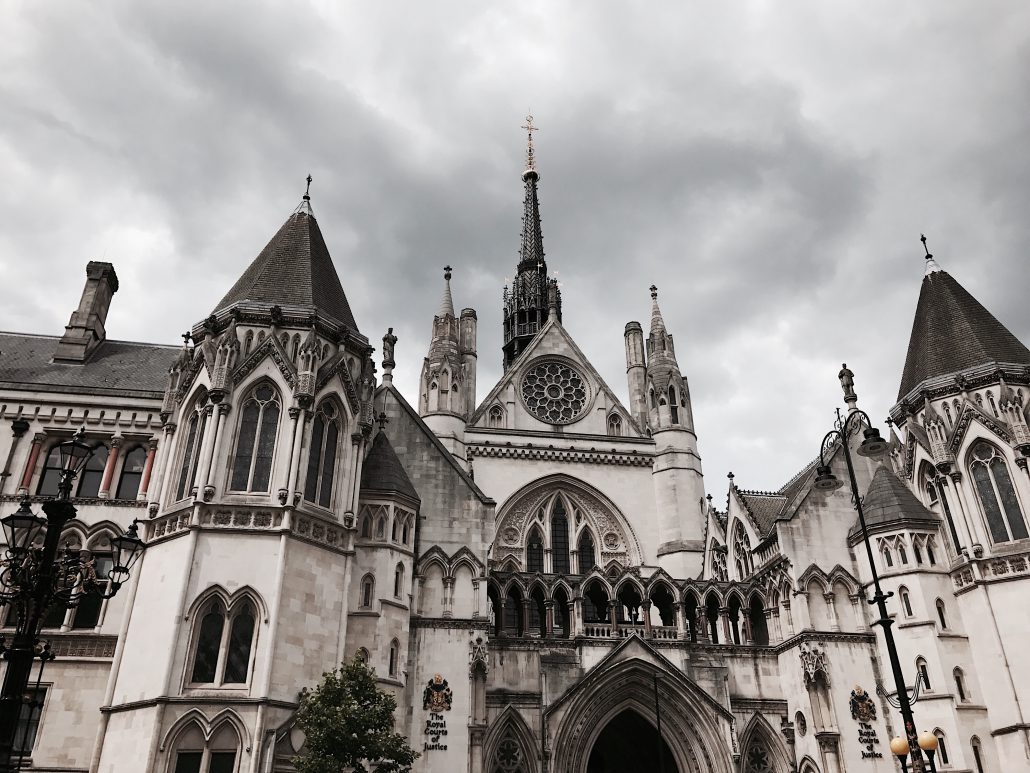
Running to the East of Trafalgar Square is The Strand which we walked all the way down past St. Paul’s Cathedral. Marking The Strand is an intricate building that is The Royal Courts of Justice. There is a large pillar that stands in the middle of the road with a dragon like gargoyle which used to be a warning for people outside the gates. Severed heads would be placed on the spikes and on the gargoyle statue in order to warn the people that they were a force to be reckoned with. Ahhhh scary!

After we walked down The Strand, we ended our walking tour day at Saint Brides Church. The church is interesting for two reasons: the steeple at the top was modeled after a wedding cake on purpose which explains why it is stacked like a cake and the church has remains and fragments after London was hit by bombings in World War II. You can actually go under the church and see where the church was hit.
It was only the second day in London but the places we went during our walking tour truly took my breath away. We stopped by St. Paul’s Cathedral which was the heart of the old city of Lodnon during the time period in which we are studying. The design was by Wren and it demonstrates both Egyptian and Ancient Greek architecture. When we were passing the catherdral during our walking tour, Professor Makdisi advised us to look inside the church, but only when their five o’clock mass started. You could not only experience the service that was being held, but also, you do not have to pay to get inside the church during this time. If you wish to see the inside of the church at times that are not during the evening service, you can pay £15 to look inside. Regardless, it is something that is definitely worth seeing.
Quick Tips:
Savannah Shapiro studied abroad in England on the 2017 Summer Travel Study program “London and the Age of Revolution:” https://ieo.ucla.edu/travelstudy/English-London/
